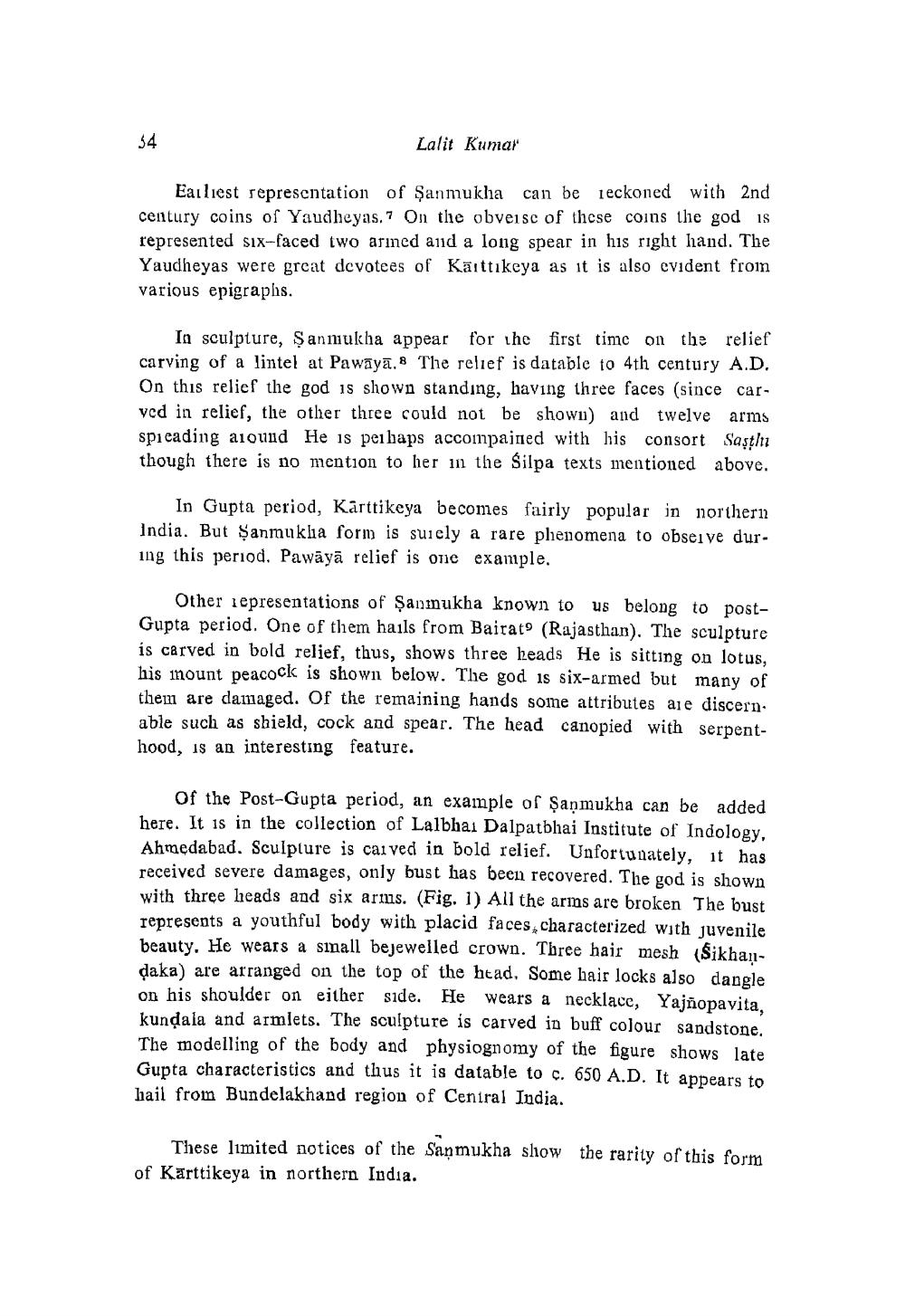________________
54
Lalit Kumar
Earliest representation of Sanmukha can be reckoned with 2nd century coins of Yaudheyas. On the obverse of these coins the god is represented six-faced two armed and a long spear in his right hand. The Yaudheyas were great devotees of Kaittikeya as it is also evident from various epigraphs.
In sculpture, Sanmukha appear for the first time on the relief carving of a lintel at Pawaya. The relief is datable to 4th century A.D. On this relief the god is shown standing, having three faces (since carved in relief, the other three could not be shown) and twelve arms spieading around He is perhaps accompained with his consort Sasthu though there is no mention to her in the Silpa texts mentioned above.
In Gupta period, Karttikeya becomes fairly popular in northern India. But Sanmukha form is surely a rare phenomena to observe during this period. Pawaya relief is one example.
Other representations of Sanmukha known to us belong to postGupta period. One of them hails from Bairat (Rajasthan). The sculpture is carved in bold relief, thus, shows three heads He is sitting on lotus, his mount peacock is shown below. The god is six-armed but many of them are damaged. Of the remaining hands some attributes are discernable such as shield, cock and spear. The head canopied with serpenthood, is an interesting feature.
Of the Post-Gupta period, an example of Sanmukha can be added here. It is in the collection of Lalbhai Dalpatbhai Institute of Indology, Ahmedabad. Sculpture is carved in bold relief. Unfortunately, it has received severe damages, only bust has been recovered. The god is shown with three heads and six arms. (Fig. 1) All the arms are broken The bust represents a youthful body with placid faces characterized with juvenile beauty. He wears a small bejewelled crown. Three hair mesh (Sikhandaka) are arranged on the top of the head. Some hair locks also dangle on his shoulder on either side. He wears a necklace, Yajñopavita, kundala and armlets. The sculpture is carved in buff colour sandstone. The modelling of the body and physiognomy of the figure shows late Gupta characteristics and thus it is datable to c. 650 A.D. It appears to hail from Bundelakhand region of Central India.
These limited notices of the Sanmukha show the rarity of this form of Karttikeya in northern India.




